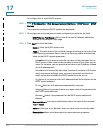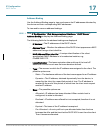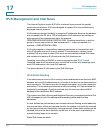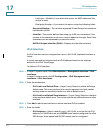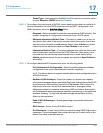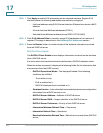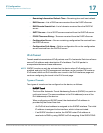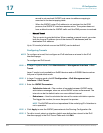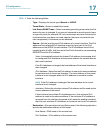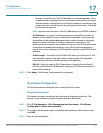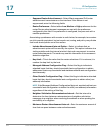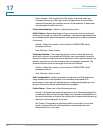
IP Configuration
IPv6 Management and Interfaces
308 Cisco Small Business 200, 300 and 500 Series Managed Switch Administration Guide (Internal Version)
17
record is not resolved, ISATAP host name-to-address mapping is
searched in the host mapping table.
- When the ISATAP router IPv4 address is not resolved via the DNS
process, the ISATAP IP interface remains active. The system does not
have a default router for ISATAP traffic until the DNS process is resolved.
• Manual Tunnel
This is a point-to-point definition. When creating a manual tunnel, you enter
both the source IP address (one of the device’s IP addresses) and the
destination IPv4 address.
Up to 16 tunnels (of which one can be ISATAP) can be defined.
Configuring Tunnels
NOTE To configure a tunnel, first configure an IPv6 interface as a tunnel in the IPv6
Interfaces page.
To configure an IPv6 tunnel:
STEP 1 In Layer 2 system mode, click Administration > Management Interface > IPv6
Tunnel.
Layer 2 mode is only available on Sx500 devices and on SG500X devices when
they are in Hybrid stack mode.
STEP 2 In Layer 3 system mode, click IP Configuration > IPv6 Management and
Interfaces > IPv6 Tunnel.
STEP 3 Enter the ISATAP Parameters.
• Solicitation Interval—The number of seconds between ISATAP router
solicitations messages, when no active ISATAP router is discovered. The
interval can be the default value or a user-defined interval.
• Robustness—Used to calculate the interval for router solicitation queries.
The bigger the number, the more frequent the queries.
NOTE The ISATAP tunnel is not operational if the underlying IPv4 interface is
not in operation.
STEP 4 Click Apply to save the ISATAP parameters to the Running Configuration file.
STEP 5 To edit a tunnel, select an interface (which was defined as a tunnel in the IPv6
Interfaces page) in the IPv6 Tunnel Table and click Edit.



